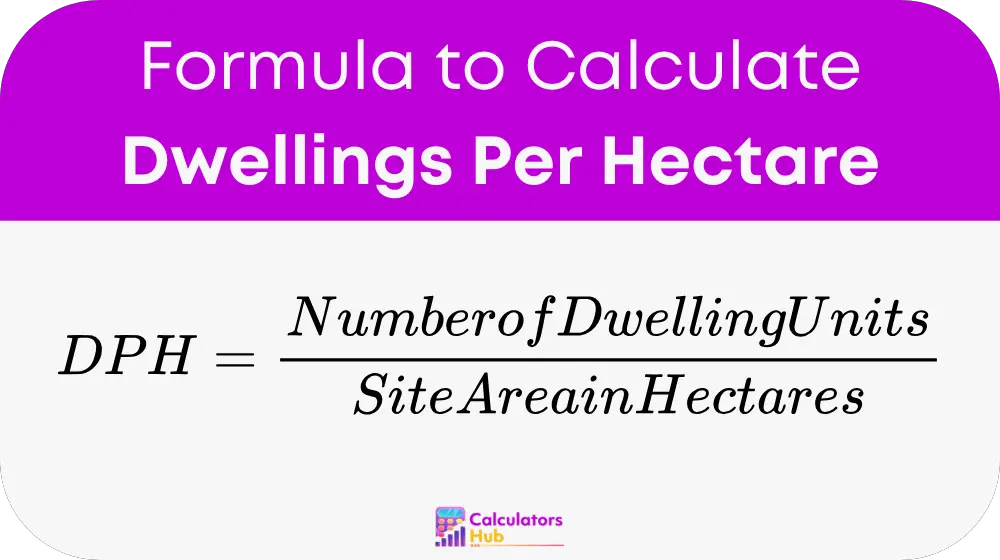The Dwellings Per Hectare Calculator figures out how many homes—like houses or apartments—fit on a piece of land measured in hectares. It’s a simple way to measure housing density, which is how crowded or spread out homes are in an area. This tool falls under the category of urban planning calculators, making it perfect for builders, city planners, or anyone designing neighborhoods. Whether you’re planning a small housing project or a big development, this calculator gives you a clear number to work with.
Why is this helpful? Knowing the number of dwellings per hectare helps you plan smartly. It shows if a site can hold enough homes to meet demand or if it’s too packed for comfort. This is great for real-life decisions, like choosing land for building, meeting housing goals, or following local rules. Plus, it’s reliable for important choices—like balancing space, cost, and livability in a community. Curious about how it’s calculated? Let’s jump into the formula next.
Formula for Dwellings Per Hectare Calculator
The formula for calculating dwellings per hectare is easy:

Where:
- Number of Dwelling Units = Total count of homes (houses, apartments, etc.)
- Site Area in Hectares = Total land size in hectares
- 1 hectare = 10,000 square meters = 2.47105 acres
This formula comes from urban planning and land use standards. You just divide the number of homes by the land area in hectares to get your answer. If your land is in square meters, divide by 10,000 to convert to hectares first. Or, if it’s in acres, multiply by 0.404686 to switch to hectares. It’s a simple process, but it gives you a solid number for planning. Now, let’s make it even easier with a table.
Quick Reference Table for Dwellings Per Hectare
Why do the math every time? This table shows dwellings per hectare for common land sizes and unit counts. It’s a fast way to estimate without a calculator.
| Number of Units | Site Area (hectares) | DPH (Dwellings Per Hectare) |
|---|---|---|
| 10 | 1 | 10 |
| 25 | 0.5 | 50 |
| 40 | 2 | 20 |
| 100 | 4 | 25 |
How to Use the Table
- Find your number of homes in the first column.
- Check the land size in hectares in the second column.
- Look at the DPH in the third column—it’s your quick result!
This table helps with searches like “how many homes on 2 hectares.” It’s a handy starting point, but for exact numbers, use the formula. Next, let’s walk through an example to see how it works.
Example of Dwellings Per Hectare Calculator
Suppose you’re planning a project with 30 homes on a 1.5-hectare site. You want to know the dwellings per hectare. Here’s how to do it:
- Plug into the formula:
Dwellings Per Hectare = Number of Dwelling Units / Site Area in Hectares
DPH = 30 / 1.5 - Calculate:
30 / 1.5 = 20
So, the dwellings per hectare is 20. That means 20 homes fit on each hectare of land. This matches planning math and helps you decide if the density works for your project—like if it’s cozy or too crowded.
Most Common FAQs
Calculating dwellings per hectare helps you understand how many homes fit on your land. It’s useful for planning housing projects, checking if the density meets local rules, or seeing if there’s enough space for people to live comfortably. It’s a key step to avoid overcrowding or wasting land.
To switch from acres to hectares, multiply the acres by 0.404686. For example, 5 acres × 0.404686 = about 2 hectares. This conversion is handy if your land is measured in acres, and it keeps your calculation accurate for the formula.
A good DPH depends on the area—10 to 20 is low density, like suburbs with big yards, while 50 or more is high density, like city apartments. Check local guidelines or project goals to see what fits best for your needs.